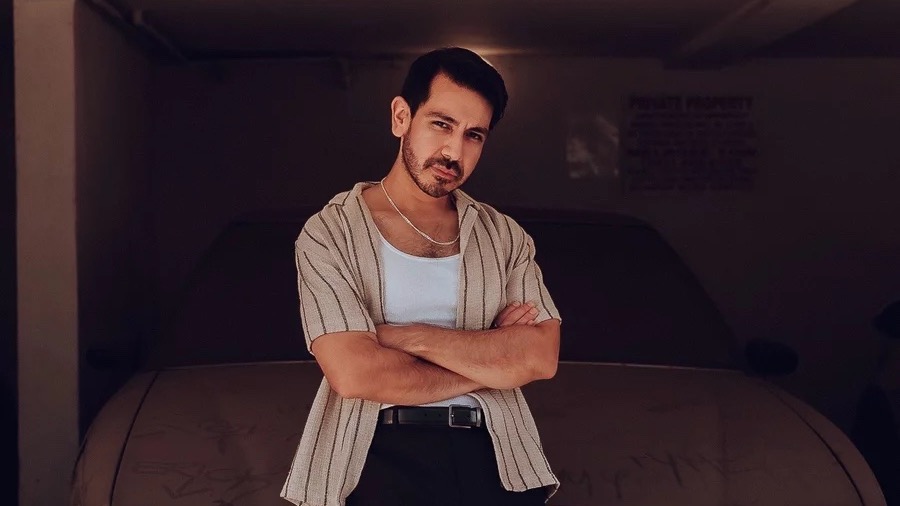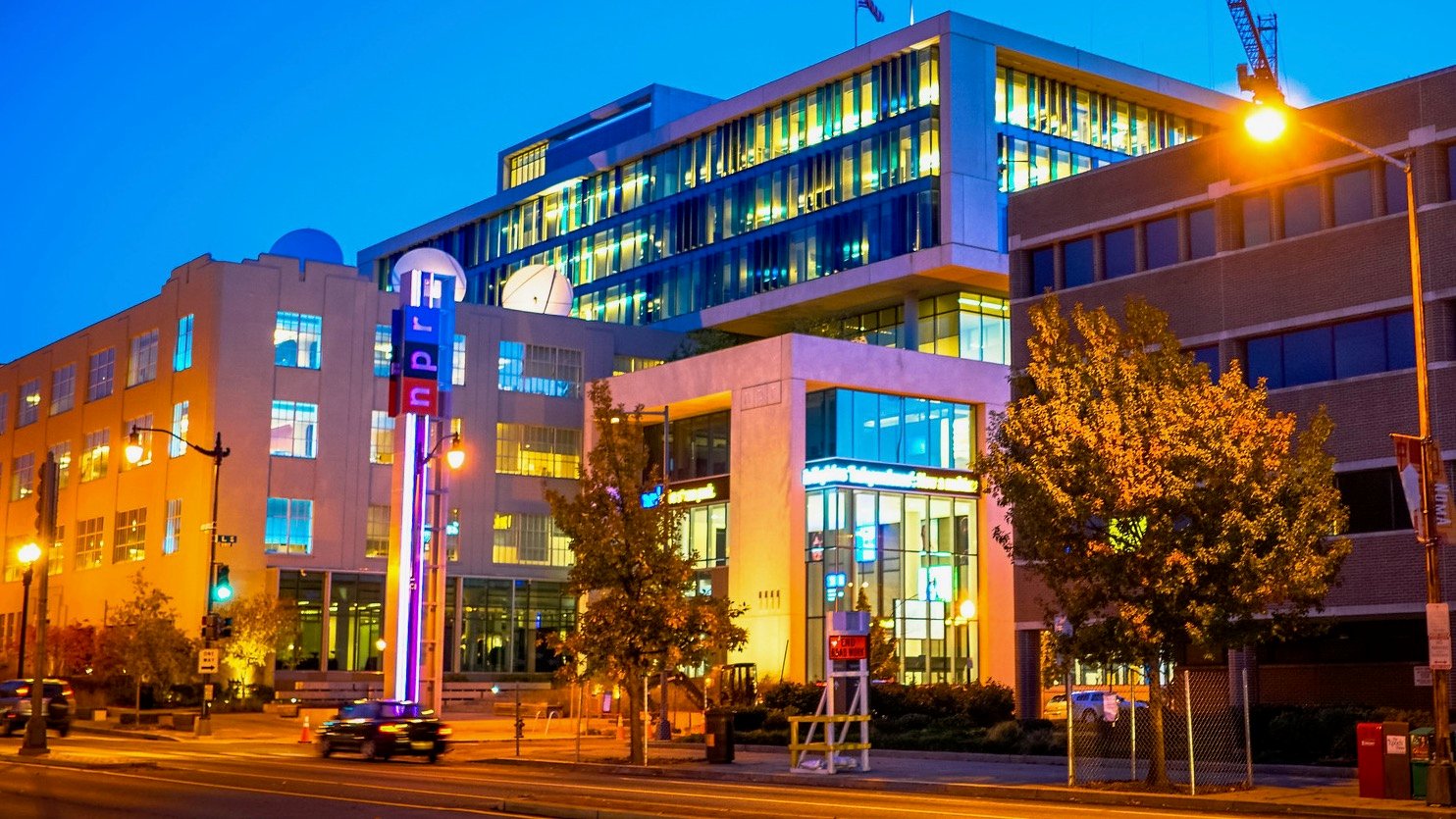Meet the first-ever editor for Latino audiences at NPR

Pablo Valdivia
Pablo Valdivia
This article was originally published by Nieman Lab and is republished here under a Creative Commons license.
As some newsroom roles go the way of the dinosaurs, brand-new jobs are being born. This interview is part of an occasional series of Q&As with people who are the first to hold their title in their newsroom. Read through the rest here.
When NPR aired bilingual coverage of the State of the Union for the first time in February, host A Martínez switched between English and Spanish depending on who was being interviewed and what they were talking about. Some topics — like culture wars in the United States — made more sense to talk about in English. Issues that were pertinent to Spanish-speaking communities in the U.S., like education and immigration, were discussed in Spanish.
“I just want to get a poll from all of us,” Martínez said with a laugh, in English. “There is no translation in Spanish for ‘woke’, right?”
The bilingual broadcast — which NPR made available on Facebook, Twitter Spaces, and via participating NPR affiliate stations — has been streamed more than the English version on Facebook. The State of the Union coverage is just one of the projects that Pablo Valdivia, NPR’s first-ever audience editor for Latino audiences, has worked on since taking the role in August 2022.
In January 2020, NPR CEO John Lansing said that expanding the diversity of NPR’s audience was its “number-one goal.”
At least 62.5 million Latinos live in the United States, making up about a fifth of the total population. Radio is an especially important way to reach them: Nielsen found last year that 97% of Latinos ages 18 and older listen to AM or FM radio at least monthly.
Bringing in younger, more diverse audiences “is the only way for public radio to remain relevant and continue to grow,” said Isabel Lara, NPR’s chief communications officer. “Through this role we want to connect with the Latino audience and let them know there are Latino journalists and creators in the public media system, share who they are and what their work is about.”
The idea for the Latino audience-editor role came out of the NPR Oye project, a deep dive into the best ways NPR could reach Latino audiences. “One of the key findings was that NPR and the public radio system were already producing some great content by and for Latinos,” Lara said, “but that it wasn’t being gathered anywhere or presented to Latino audiences in a consistent and coherent way.”
Before coming to NPR, Pablo Valdivia spent eight years at BuzzFeed as a staff writer and as the senior Latinx culture editor, helping launch the company’s sub-brand, Pero Like, that creates creative video and social media content for bilingual Latinos in the U.S. Now, he’s focused on bringing NPR’s journalism to Latinos on all platforms, including radio, online, podcasting, and social media.
I emailed with Valdivia about his new role. Our conversation, below, has been edited for length and clarity.
HANAA’ TAMEEZ: How “first” is this position? It’s the first time that someone has held the title of “audience editor for Latino audiences” in your newsroom, correct?
PABLO VALDIVIA: While NPR has a great team of audience editors who have been putting the work in for years now, there hasn’t been one solely dedicated to platforming Latino stories. So in that [way], my position as “audience editor, Latino audiences” is a first for NPR.
TAMEEZ: Have you seen other newsrooms create similar positions?
VALDIVIA: Fidel Martinez, the editorial director of Latino initiatives at the Los Angeles Times, has been doing amazing work in this space with his team. Other newsrooms have respective verticals, such as NBC Latino and HuffPost Latino Voices. I’m not certain if they have employees dedicated to those verticals, [but] I stand on the shoulders of the newsrooms who have already carved out a lane for our community. Other media org sub-brands like BuzzFeed’s Pero Like and Refinery 29’s Somos also provide a lot of value to this space. While our titles aren’t a one-to-one match throughout orgs, we’re all working towards the same goal.
TAMEEZ: What do you do in your job as audience editor for Latino audiences?
VALDIVIA: My role is three-pronged. The first prong is acting as NPR’s connective tissue. We’re a large company that spans radio, digital, and podcasting. We also have over 1,000 member stations throughout the country. That’s all to say, there are a ton of stories coming out on a daily basis from NPR’s network. As the connector, I pull out stories that I believe Latinos would value most and ensure that they don’t slip through the cracks. That can look like platforming stories on our social pages, making sure certain podcast episodes have a digital presence, or connecting a reporter to a video producer, to name a few.
The second prong is both writing and pitching stories to our team of reporters. I have my ear to the community and try to make sure our newsroom does too. I flag potential stories and topics for coverage and pick stories up here and there when needed.
The third prong is leading a new platform for NPR called NPR Oye. What started out as an internal working group and Twitter page recently expanded onto Instagram and is carving out a new space for NPR’s Latino audiences. The Instagram is dedicated to spotlighting stories and videos from within NPR that are by and for Latinos, and it’s hopefully just the start for NPR Oye.
TAMEEZ: Can you describe how you’re thinking about developing “strategies to help call in the community across the network” and “ensure that Latino voices get the visibility they deserve,” as mentioned in your bio?
VALDIVIA: In order to even develop a strategy or call Latinos in, there have to be stories to strategize around. If we’re not speaking with and in service to the Latino community in our stories, there’s no reason for them to come or to care about what NPR does.
My first order of business has been connecting with leaders on different desks and help them funnel story ideas and initiatives down to their teams. For example, I worked closely with growth editor Arielle Retting and senior manager of content development Lauren González to create a digital presence for our first bilingual podcast, The Last Cup. I was also approached by Morning Edition executive producer Erika Aguilar on how to best execute an all-Latino bilingual State of the Union broadcast, which was a first for NPR. I’m now working with several employees on our Visuals team, like producer Estefania Mitre, to develop a more robust Latino presence on our visual social channels.
All of this work starts from within and requires every employee here to rally around NPR’s mission of serving the American public. The U.S. Latino population accounts for nearly 20% of all Americans — we make up a large portion of said “public.” Our stories are a part of the fabric of this country, and they should be a part of the fabric of every news organization in the U.S. I refuse to let us fade away into the background.
TAMEEZ: What did serving Latino audiences look like in your newsroom before this role was created? How will that change, now that you’ve taken this title of audience editor?
VALDIVIA: NPR has a mighty force of Latino writers, producers, editors, and so on who create videos, stories, and podcast episodes that amplify the voices in our community. That work didn’t start with me. The difference now is that I’m a centralized force who can bring all that work together, as well as be a sounding board for ideas and hold non-Latinos in the newsroom accountable for covering this community. The weight of coverage shouldn’t have to fall on the shoulders of a select few, but rather on the organization as a whole. I’m here to make sure of that.
TAMEEZ: What kinds of previous experience — personal, professional, educational, etc. — led you to this job? I would love to learn more about your time at BuzzFeed with Pero Like!
VALDIVIA: When I first started at BuzzFeed as a fellow in 2015, I began writing stories about my own lived experience as a way to connect with my parents. They’re Mexican immigrants, and I thought that if I wrote stories that were accessible to them, then they might reach other Latinos too. Shortly after, writers Norberto Briceño and Alex Alvarez, who were already doing this work, began talking about building their own platform, and Pero Like, BuzzFeed’s Latino brand, was born.
What started as a small Facebook page transformed into a booming YouTube channel built with the support of founding producers Jenny Lorenzo and Jazmin Ontiveros. I moved up the ranks and eventually became BuzzFeed’s first senior Latinx culture editor, which meant I oversaw all of the editorial content for Pero Like as well as editorial Latino coverage for BuzzFeed as a whole. In my time there I was a writer, editor, video producer, cultural consultant, you name it — all in the goal of trying to connect with people like me.
Pero Like was a baby I helped raise and look after for many years, but now it’s a full-grown, and fully-staffed, adult who can make decisions without my support. I came to NPR in the hopes of raising something brand new from the ground-up once again.
TAMEEZ: What are your hopes and dreams for this new role?
VALDIVIA: My ultimate hope is that Latinos see a part of themselves in the stories we tell. Companies often care about speaking to and “for” us, but not with us. I hope I can change that narrative, even just a little bit.
I hope NPR Oye becomes way bigger than myself. I’m just one perspective underneath the large umbrella of “Latinidad.” I would love to see NPR Oye in every pocket of NPR in the future — be that radio, digital, and podcasting.
TAMEEZ: What do you see as some of the challenges and opportunities for being the first audience editor for Latino audiences — or the first anything — at a news organization? Are there certain groups, people, or resources that you’ll look to, outside of your own newsroom, as you do this work?
VALDIVIA: When you’re the first, there’s no road map. You have to draw the paths on your own and often encounter speed bumps and stop signs along the way. The destination may not be clear at first, but you just chug along and do the best work you can do. This is both freeing and intimidating. In one regard, I create my own future. On the other hand, I can easily lead myself astray. This is why I’ve created a support network from every part of the company that can prop me up and stand behind me when I need it most.
I’m just one single Mexican-American who can’t speak for the entirety of the Latino community. Our community is diverse, complex, and often fragmented, so I look to my peers in other departments for guidance, and I also look to non-Latinos to support the work that I do. It’s the only way to avoid getting stranded out on this “Latino island” all on my own.






